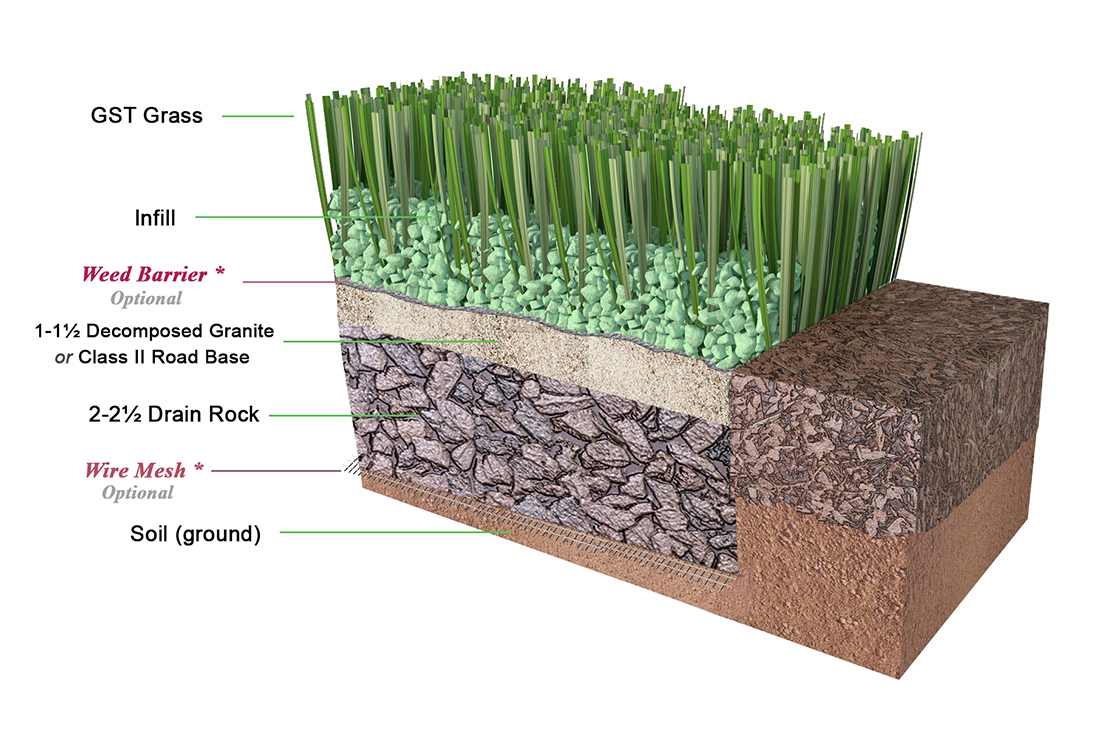Artificial Grass Installation Videos
Artificial grass installation can take from 5 to 12 hours to install on average for any lawn small to average size. We have an artificial lawn installed in Auburn, California in the beautiful Lake of the Pines community. The most important part of synthetic turf installation is the base preparation. If you site is properly prepared, spread and well compacted with drain rock, road base or decomposed granite, the second step (see the second video) is easy. You just need a pair of scissors, measuring tape and a pair of strong hands to lay out the turf on the base, to seam the seams, and to fasten the turf down with staples or nails.
Seaming the Edges of Turf During Installation Videos
If you every worked with carpeting, you know that seaming can be a "dirty" business. With synthetic turf it may get even "dirtier" because you install artificial grass on the top of a granite and a road base. A couple of years ago every synthetic turf installer used special tape and glue to seam the edges of the turf. You can imagine how messy it was, not talking about time wasted on drying up glue and cleaning up afterwards. It was also impossible to get the seam apart if you made a mistake. You had to cut off the big piece of turf and replace it with a new one. If you are still using this method to seam the turf, don't! Times of seaming with glue are over. Thanks to physicists, we have a new tool called EasySeam machine. It works on radio-waves (not micro-waves as many are mistaken). When you seam with EasySeam, it doesn't hit up; it doesn't burn hands; it doesn't use any glue, only the seaming tape you lay out underneath the seam, and most importantly, you can take a seam apart at any time you are not happy with your seam. New generation of turf installers may not realize how lucky they are to have radio-waves seaming machine for artificial turf installation. In any case, Dave tells you all about it in two videos below.
Tools Required For Artificial Grass and Turf Installation
Nothing fancy. Almost all required tools you can find in your garage, except maybe for carpet stretcher.
Carpet stretcher is very useful when installing artificial turf. Specifically, you need it before you start seaming the edges of turf. If you'll watch the second installation video, you will see how to use the stretcher. As a tip, the carpet stretcher is also called a knee-kicker. You strike the padded end of it with you knee for wrinkles on the seam stretch nicely. A simple carpet stretcher from Home Depot will do. Don't want your turf buckling?
Use the stretcher.
Plate Compactor
If you don't have a plate compactor, rent one for a day or two. Your base must be stable and well-compressed before you lay turf or pavers on top of it. If you don't compact your base well, it will continue to shift and compress in time, causing ruts in your lawn, developing higher or lower areas which eventually will cause buckles and wrinkles of turf as well.
When you compact your base with a plate compactor, constantly water the area with a hose. Compaction is a very simple process, but it takes time and patience to go over the area multiple times. Some say three to four times is good enough, but to be safe repeat the go-round compaction procedure up to ten-twelve time before introducing the sub-base material. Don't forget to create a little slop of the area for a proper drainage.
Drop Spreader (For Infill)
Vibrating Plate Compactor
Materials Required for Artificial Grass and Turf Installation
